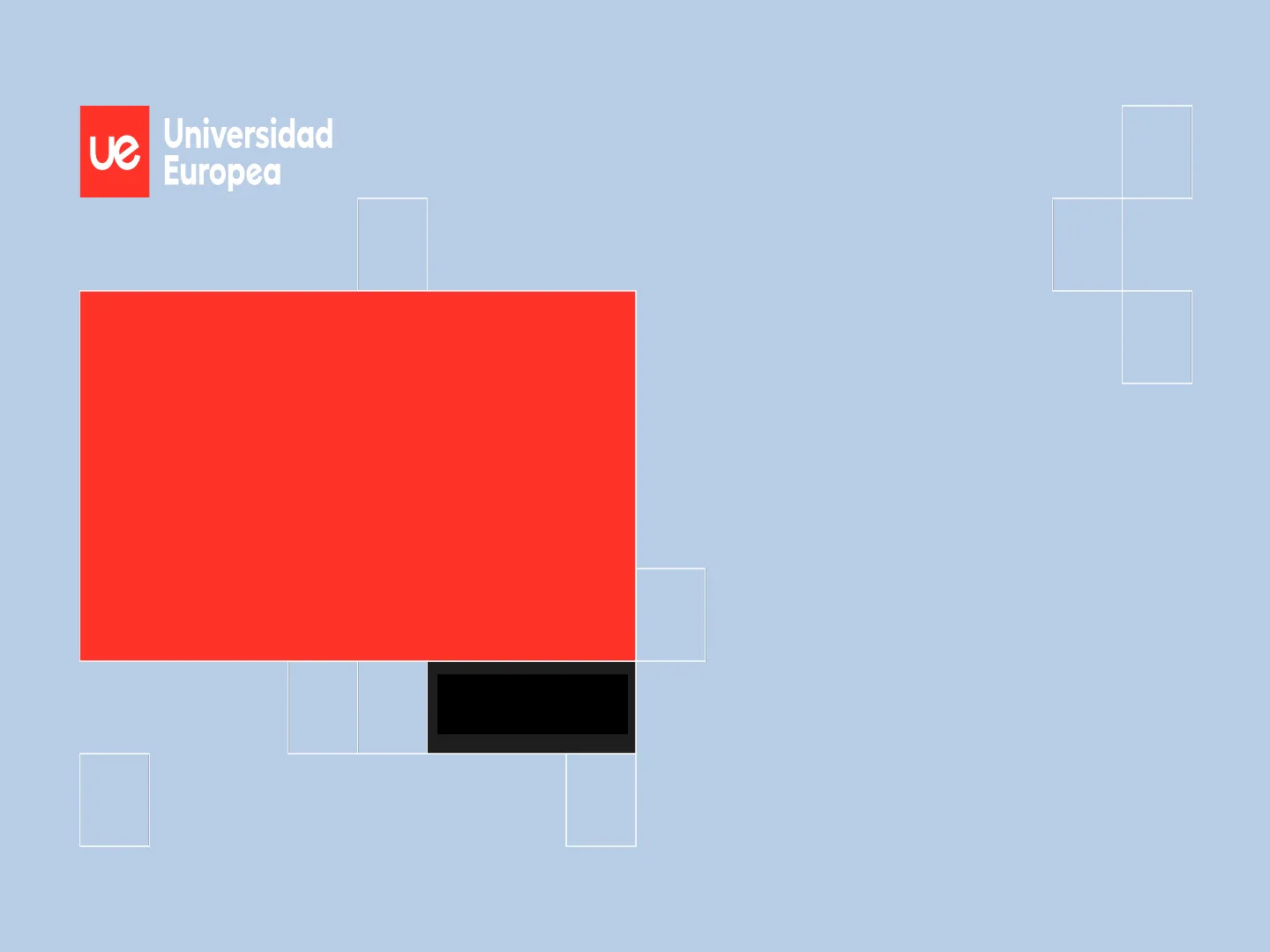Bacterial Morphology and Structure Unit 5 from Universidad Europea
Slides from Universidad Europea about Bacterial Morphology and Structure Unit 5. The Pdf describes bacterial morphology and structure, focusing on the cell wall, including peptidoglycan, teichoic acids, and lipopolysaccharides. The Pdf is a useful Biology resource for University students.
See more51 Pages


Unlock the full PDF for free
Sign up to get full access to the document and start transforming it with AI.
Preview
Bacterial Morphology and Structure
Prokaryotic and Eukaryotic Cells
Ue
Universidad
Europea
BACTERIAL
MORPHOLOGY AND
STRUCTURE
Unit 5
1
1BACTERIAL MORPHOLOGYProkaryotic and eukaryotic cells
Prokaryotic cells: primitive
nucleus (pro-karion)
Bacteria and greenish
blue algae
Eukaryotic cells: true
nucleus (eu-karion)
Fungi, protozoa,
animals and plants
Some typical cells
animal cell
cell membrane
vacuole
centriole
ribosomes
centrosome
endoplasmic
reticulum
plasma
membrane
chloroplast
ribosomes
mitochondrion
nucleus
nucleolus
chromosomes
bacteria cell
(bacillus type)
Golgi complex
cytoplasm
cell wall
chromosome
plasmodesma
ribosomes
cell
wall
plasma
membrane
flagella
pili
capsule
mesosome
@ 2007 Encyclopædia Britannica, Inc.
plant cell
vacuoleProcaryotic and eukaryotic cells
Eukaryotes vs. Prokaryotes
EUKARYOTES
PROKARYOTES
NUCLEOUS
- Nuclear membrane
- Chromosomes
YES
NO
1
CITOPLASMA
-Mitochondria
YES
NO
-Golgi apparatus
YES
NO
-Endoplasmic reticulum
YES
NO
-Ribosomes
80 S
70 S
CELL WALL
NO
SI
PLASMA MEMBRANE
Sterols
No sterols
DIVISION
Mitosis
Binary fissionProcaryotic and eukaryotic cells
Cellular Division
NUCLEUS
Prokaryotic cells:
1 chromosome
No nucleus
No mitosis
Division by binary fission
Eukaryotic cells:
Multiple chromosomes
Nucleus
Mitosis
Prokaryotic
chromosome
Plasma
membrane
Cell wall
Duplication
of chromosome
Continued growth
of the cell
Division into
two cells
@Addison Wesley Longman, Inc
Bacteria Characteristics
Size, Shape and Arrangement of Bacteria
· Size: Variable,
Bacteria: um = 1x10-6 m
Virus: nm = 1x10-9 m
Examples:
-Mycoplasma genitalium 0,4 um
-Haemophilus influenzae 1,2 um
-Staphylococcus aureus 0,9 um
-Escherichia coli 1,5 um
Red blood cell: 8 um
> Visualisation by MICROSCOPEBacteria: size, shape and arrangement
Bacterial Shapes
· Shape:
- Coccus- roughly spherical
- Bacillus- rod-shaped
- Coccobacillus- short and
plump
- Vibrio- gently curved
- Spirillum- curviform or spiral-
shaped
30.0 KV 1.0 10000x
2 um
Erythromycin-resistant Group A Streptococcus
Greens for Disease Control and Prevention
Multidrug-resistant Pseudomona aeruginosa
Cortars Sur Sene Spread and Position
Fuente: Public Health Image Library (PHIL), CDC.Bacteria: size, shape and arrangement
Bacterial Grouping
· Arrangement or Grouping
· Cocci- greatest variety in arrangement
- Single
- Pairs (diplococcic)
- Tetrads
- Irregular clusters (staphylococci and micrococci)
- Chains (streptococci)
- Cubical packet (sarcina)
· Bacilli- less varied
- Single
- Pairs (diplobacilli)
- Chain (streptobacilli)
- Row of cells oriented side by side (palisades)
•
Spirilla
- Occasionally found in short chains
Microbial Structure Study
Microscopy Techniques
Study of microbial structure
Microscopy: Bacteria size: microns (um). Microscope use
- Light microscope
· Bright-field microscope
· Dark-field microscope
· Fluorescence microscope
- Electron microscope
. Transmission electron microscope (TEM)
· Scanning electron microscope (SEM)Study of microbial structure
Microscope Features and Utility
| MICROSCOPE | FEATURES | UTILITY |
|---|---|---|
| Optical light background | Visible light | Up to 0.23 um Sample on bright background Staining Easy to use |
| Optical Darkfield | Diffracted visible light | Bright sample on dark background Microorganisms difficult to stain |
| Optical phase contrast | Diffracted light | Sample with different degrees of brightness and contrast Internal structures |
| Optical Fluorescence | UV light | Fluorescent sample on non- fluorescent background Immunofluorescence Auramine staining |
| Electronic | Electron Beams | Structures smaller than 0.23 um Ultrastructures Viruses |
Optical light background
Optical Darkfield
Optical Fluorescence
Optical phase contrast
Electronic
Fuente: Public Health Image Library (PHIL), CDC.
Microscopic Observation Methods
Microscopic methods of observation of bacteria:
Fresh examination: without staining
Staining:
- Simple: 1 stain
- Differential or compound stains:
Gram stain
Ziehl-Neelsen stain or acid-fast stain
- Specific stains: reveal bacterial structures, e.g.
endospores.
- Fluorescent stains: Auramine (mycobacteria) and others
- Other stains: Giemsa and others
Special examinations (electron microscopy)
Gram Stain Procedure
Gram stain
· Differential or complex staining
. Differences in structure and/or chemical composition of the bacterial
wall
· Great utility: identification and classification of bacteria
· Steps of Gram staining:
1. First stain, main stain: VIOLET CRYSTAL
2. Mordant: increases affinity. LUGOL (iodine solution)
3. Decolorant: removes the first stain in some bacteria.
ALCOHOL-ACETONE
4. Contrast dye: SAFRANIN, stains only bacteria that have
been decolourised.Gram stain
Gram Stain Visuals
Crystal violet
lodine
Alcohol
Safranin
1 Application of crystal
violet (purple dye)
2 Application of
iodine (mordant)
3 Alcohol wash
(decolorization)
4 Application of
safranin (counterstain)
(a)
Rod
Coccus
5
1
Vibrio
(b)
Copyright 2004 Pearson Education, Inc., publishing as Benjamin Cummings.Gram stain
Gram Stain Results
Highly useful: identification and classification of bacteria
· Gram-positive bacteria: G(+) dark purple
· Gram-negative bacteria: G(-) pink-red
Gram Stain:
1. Crystal Violet
2. Mordant
3. Decolorant
4. Safranin
G(+)
G(-)
Bacterial Structure Components
Obligate and Facultative Structures
BACTERIAL STRUCTUREBACTERIAL STRUCTURE
The structure of a bacterium consists of:
Obligate, constant structures: These are always present
in all bacteria, with some exceptions.
Facultative structures: not always presentProcaryotic cells
Obligate Bacterial Structures
- Obligate structures:
1.
Cell wall
2.
Plasma membrane
3
Cytoplasmic matrix
4.
Bacterial chromosome
Bacterial Cell Wall
Cell wall
· Exclusive of bacteria
· Present in all bacteria except mycoplasma (genus Mycoplasma and
Ureaplasma)
· External structure
· Semi-rigid layer outside the plasma membrane
· Gives shape to bacteria and protection
· Formed by polysaccharides, lipids and proteins
· Determine the type of stain used: Gram/Ziehl-Neelsen
· Different in gram-positive, gram-negative and mycobacteria
(genus Mycobacterium)Cell wall
Peptidoglycan Composition
· Main component: peptidoglycan or murein
· Peptide: amino acid chains
· Glucan: NAG-NAM-NAG-NAM
NAG = N-acetylglucosamine
NAM = N-acetylmuramic acid
- NAG and NAM alternate linked by a 3-(1-4) glycosidic bonds
- Tetrapeptides bind to each NAM
LISOZYME breaks the
฿ (1,4) glycosidic
bonds between NAG
and NAMCell wall
Peptidoglycan Structure and Antibiotics
CSH
&PRESS
NCBI
Essentials of Glycobiology
Second Edition
a
[MurNAcß1-4GlcNAcß1-4]
OH
c
O
O
O
NHAC HO
NHAC
B-Lactams
HN
O
b
L-Ala
L-Ala
D-Glu
m-DAP-
L-Ala
D-Glu
m-DAP
L-Ala
D-Glu
m-DAP
D-Ala
HOOC
NH
D-Asp
m-DAP
m-DAP HN
COOH O
L-Ala
L-Ala
L-Ala
N
L-Ala
D-Glu
m-DAP-
L-Ala
D-Glu
m-DAP
L-Ala
D-Glu
m-DAP
D-Ala
D-Ala
-D-Ala
D-Ala
D-Ala
D-Ala
HN
m-DAP
m-DAP
D-Ala
D-Glu
D-Glu
D-Glu
D-Glu
L-Ala
L-Ala
L-Ala
L-Ala
HOOC
D-Ala
Vancomycin
L-Ala
D-Glu
m-DAP
L-Ala
D-Glu
m-DAP
D-Ala
L-Ala
D-Glu
m-DAP
D-Ala
D-Ala
D-Ala
D-Ala
D-Glu
m-DAP
D-Ala
m-DAP.
D-Ala
D-Ala
·D-Ala
D-Ala
D-Ala
D-Glu
D-Glu
D-Glu
H
NH
D-Ala
D-Ala
m-DAP
- D-Ala
m-DAP
Peptidoglycan
FIGURE 20.3. Peptidoglycan. (A) Schematic representation of peptidoglycan strands composed of alternating
residues of N-acetylmuramic acid (MurNAc; orange) and N-acetylglucosamine (GlcNAc; blue) showing periodic
cross-links. (B) Pentapeptides consisting of l-Ala, d-Glu, meso-diaminopimelic acid (m-DAP), and d-Ala form cross-
links between the peptidoglycan strands. (C) Structure of the muropeptide subunit showing a cross-link. B-Lactam
antibiotics block the assembly of the pentapeptide. Vancomycin blocks the cross-linking reaction, which requires
removal of the terminal d-Ala residue.
- OH
L-Alaa Gram-negative bacteria
b Gram-positive bacteria
Lipopolysaccharide
Teichoic acid
Porin
Lipoteichoic acid
Outer
membrane
Periplasmic
space
Lipoprotein
Peptidoglycan
Peptidoglycan
Lipoprotein
periplasmic
space
Cell
membrane
Cell
membrane
c Mycobacteria
d Fungi
Lipoarabinomannan
Glycolipids
Porin
Mycolic
acids
Manno-
proteins
Arabino-
galactan
ß-glucan
Peptido-
glycan
Chitin
Lipoprotein
Lipoprotein
Cell
membrane
Cell
membrane
Figure 1. Cell wall structure of Gram-negative bacteria, Gram-positive bacteria, mycobacteria
and fungi
Fuente: Lisa Brown et al. Through the wall: extracellular vesicles in Gram-positive bacteria, mycobacteria and fungi. Nat Rev Microbiol. 2015 Oct; 13 (10): 620-630.Cell wall
Gram-Positive Cell Wall
There are differences between the cell wall of
gram-positive and gram-negative bacteria.
1. Gram-positive cell wall
· Thick wall of peptidoglycan
. Contains teichoic and lipoteichoic acids: they
are a virulence factor (they have antigenic
properties).
· No outer membrane or lipopolysaccharide
(LPS)Cell wall
Gram-Positive Cell Wall Diagram
Gram-positive Cell Wall
LTA
Peptidoglycan
Protein
Phospholipids
Cytoplasmic
membrane
Cytoplasm
FIGURE. Cell wall from Gram-positive bacteria. Gram-positive bacteria lack the outer membrane
and associated lipopolysaccharide (LPS) that is present in Gram-negative organisms. In Gram-
positive bacteria, the peptidoglycan layer is thicker and contains teichoic acids (LTA).
CSH
PRESS
NCBI
Essentials of Glycobiology
Second EditionCell wall
Gram-Negative Cell Wall
2. Gram-negative cell wall
· Thin peptidoglycan layer
· Outer membrane, the most superficial part, exclusive
of gram-negatives; it contains the Lipopolysaccharide
(LPS) or endotoxin
· Periplasmic space (between outer and cytoplasmic
membranes)
· Transmembrane proteins (porins): diffusion of
hydrophilic molecules
. Lipopolysaccharides (LPSs): potent stimulator of
immune responses.Cell wall
Mycobacteria Cell Wall
3. Mycobacteria cell wall (Mycobacterium)
· Mycobateria: Acid fast bacteria (AFB)
· In peptidoglycan: NAG and NGM (N-glycolylmuramic acid)
· Lipidic cell wall (60%): mycolic acids on the outside
· Arabinogalactan polymer: between the peptidoglycan and
the lipid layer of mycolic acids
Mycobacterium tuberculosis
Mycobacterium leprae
Atypical mycobacteria (non-tuberculous)Cell wall
Mycobacteria Cell Wall Lipids and Resistance
3. Mycobacteria cell wall (Mycobacterium)
High amount of lipids in the wall (60% wall weight):
They do not take up dyes except when the preparation is
heated.
Acid-alcohol resistant: Once stained, they do not
discolour with acid-alcohol.
Highly resistant to: disinfectants (except alcohol, carbolic
acid or phenol), detergents, some antibiotics.
Ziehl-Neelsen Stain
Ziehl-Neelsen stain
1. Main colouring agent: Phenylated fuchsin (heat
3 times).
2. Discolouring agent: acid-alcohol (HCl + alcohol)
3. Contrast dye: Methylene blue.
AFB: do not discolour and remain fuchsia, pink-red. The
other components of the preparation are stained blue.
Fuente: Public Health Image Library (PHIL), CDC.